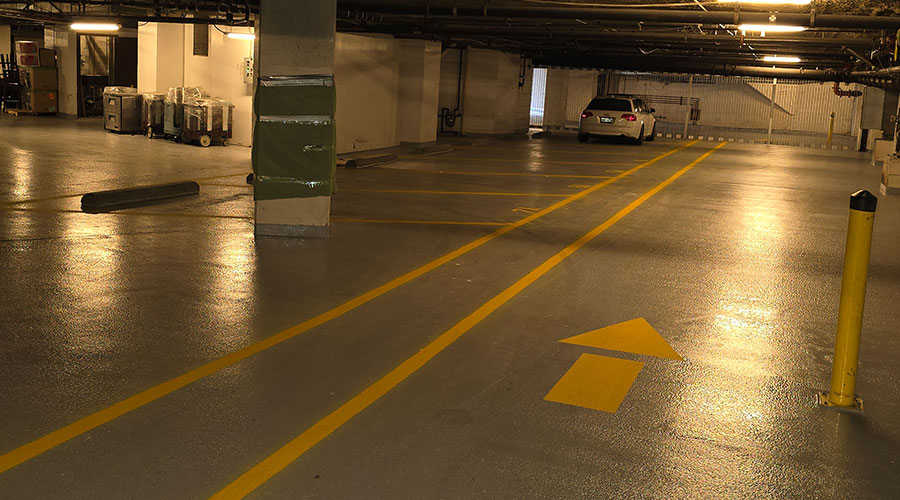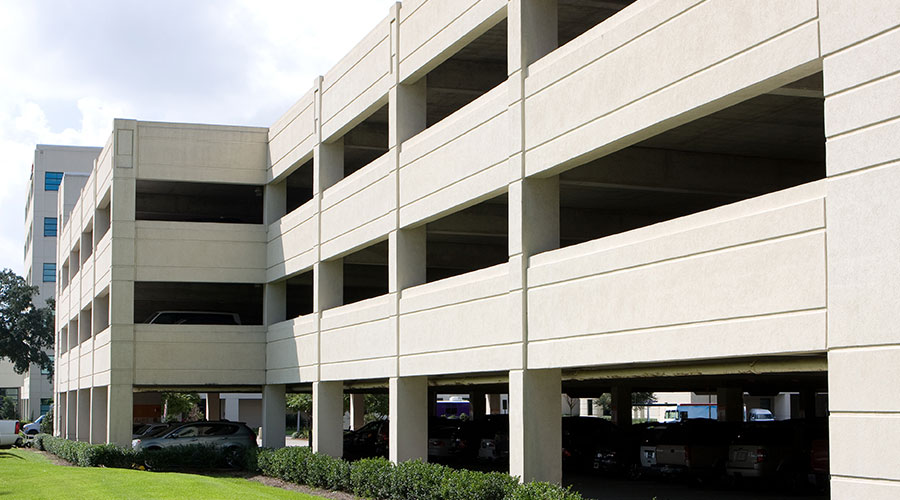Paints: Both Sides Now
Environmental standards for paints and coatings reflect performance parameters as well.
In the past, facility executives looking for green paint — in the environmental sense, that is — might have been frustrated. Early versions of environmentally responsible paints didn’t perform as well as their conventional counterparts.
That’s not typically the case any more. Industry experts agree that many of today’s paints and coatings have a much lower impact on the environment than their predecessors, but still cover well, look good and hold up.
The performance of many of today’s water-based paints rivals that of solvent-based paints, yet they typically have less of an impact on the environment, says Cris Crissinger, partner with McMillan Smith & Partners Architects. Earlier versions of water-reducible (that is, cleanup requires only soap and water) paints often didn’t adhere well and weakened when they came into contact with soap and water.
However, today’s water-reducible paints often are made of acrylic, and most perform as well as, if not better than, many solvent-based paints, Crissinger says.
In addition, environmentally responsible paints can be competitively priced.
Disposal costs also tend to be lower with green paints. And organizations usually don’t have to track them as hazardous materials.
To choose the paint that best fits the application and has a minimal effect on the environment, facility executives should evaluate the environmental standards published by several different groups. Doing so can help determine which standard best measures the performance and environmental attributes important to their application.
What’s Being Measured
Several qualities determine how well a paint is likely to perform. Among those are:
- Drying and re-coat time: how quickly a paint will accept a second coat.
- Hiding power: a paint’s ability to hide the nature of the surface on which it is applied.
- Adhesion: the ability of the paint to resist removal from the surface.
- Scrubability: a paint’s ability to hold up even after repeated scrubbings with a bristle brush.
- Burnish resistance: a paint’s ability to maintain its sheen even after being repeatedly wiped with a soft cloth.
The American Society for Testing and Materials (ASTM) has developed numerous test methods for different paint and coating types, says Tom Sliva, vice chair of ASTM’s paint committee. The methods can be found online at astm.org. Sliva also is vice president and technical director with DL Labs, an independent testing laboratory.
With all the interest in sustainable design, it’s no surprise that manufacturers have taken steps to minimize the environmental impact of paints and coatings — and have sought to market the green attributes of their products. A good example is how manufacturers market the amount of VOCs — volatile organic compounds — in their products. VOCs are substances that easily evaporate into the air and can combine with atmospheric oxygen to form smog and ozone. Indoors, they diminish indoor air quality. Over the years, manufacturers have reduced VOC emissions from paints and coatings. In fact, some manufacturers claim to be VOC-free. But some of those claims don’t pass the sniff test.
“If you can smell it, there are VOCs,” says Paul Bertram, president of PRB Design.
To address issues like what “low-VOC” really means, several environmental labeling organizations have issued standards for paints and coatings.
Green Seal
Green Seal is one. In general, the top 15 to 20 percent of products in a category can earn a Green Seal label, says Mark Petruzzi, vice president of certification with Green Seal.
In evaluating paints, Green Seal considers several factors. One is the level of VOCs. To earn Green Seal certification, non-flat interior paint must have fewer than 150 grams of VOCs per liter of product, minus water.
In addition, Green Seal considers whether chemical compounds it considers hazardous were used in manufacturing the paint. These include benzene, napthalene and mercury, among others. To earn Green Seal certification, none can be present in the paint.
The packaging of paints bearing the Green Seal certification mark also must include a statement that discourages consumers from pouring the paints down a drain. Finally, the paint cans must not have been manufactured with lead.
Green Seal’s standards are developed in a public forum. During the process of developing standards, members of the industry and the public can submit comments, which Green Seal employees consider. “Everything is open and transparent,” says Petruzzi.
In the past, Green Seal’s standards had come under some criticism by those who said the standards neglected to consider performance. Clearly, if a product performs so poorly that users have to replace it or re-do their work, its environmental benefits will be reduced.
Petruzzi points out that Green Seal does determine that a product performs its intended function. For instance, interior paints must meet standards for abrasion resistance, hiding power and stain removal in order to earn the Green Seal mark.
Master Painters Institute
Another standard-setting group is the Master Painters Institute, or MPI. Starting in 1995, the group began developing performance standards for paint, says Barry Law, president. Then, several years ago, the group began getting queries regarding the VOCs in different paint categories.
As a result, MPI began developing green performance standards to take into account both a paint’s environmental attributes and its performance. In May 2005, MPI released its Green Performance Standard. The standard provides a database of paint products that meet requirements for performance and durability, as well as criteria for environmental impact. “It takes a list of about 2,000 products and boils it down to 500 that meet the standard,” says Law.
For instance, the standard identifies requirements for scrubability and hiding power that paints must meet. It also lists chemicals that are not permitted as ingredients in the paints, as well as maximum levels of VOCs allowed.
MPI’s work has come under criticism by some who say their standard-setting process is not as open as it should be. For example, while its standards are available online, there is a charge to obtain them.
Greenguard
A third certification body is the Greenguard Environmental Institute. Greenguard focuses on indoor air quality, says Henning Bloech, director of communications. “We look at the chemicals that, when you paint, may off-gas and have an impact on indoor air and the building’s occupants,” he says.
For example, formaldehyde, which sometimes is used as a preservative, can cause nausea and eye irritation.
Facility executives should check any paints for the presence of chemicals that have been identified as carcinogens or toxins, Bloech says. Ideally, the amount of these chemicals would either be very low, or the chemicals would be encapsulated so that they’re not released into the environment, he says.
To measure the effect a particular type or brand of paint may have on indoor air quality, Greenguard paints an 8 inch-square piece of drywall and then places it in an environmental test chamber, where purified air is blown over it. Testers then measure the presence of different chemicals in the air as it leaves the chambers.
This is important, as even paints that can claim that they are “no-VOC” or “VOC-free” may emit some VOCs during the drying process. To earn Greenguard certification, paints must meet the organization’s limits for VOC emissions.
Karen Kroll, a contributing editor to Building Operating Management, is a freelance writer who has written extensively about real estate and facility issues.
Related Topics:











